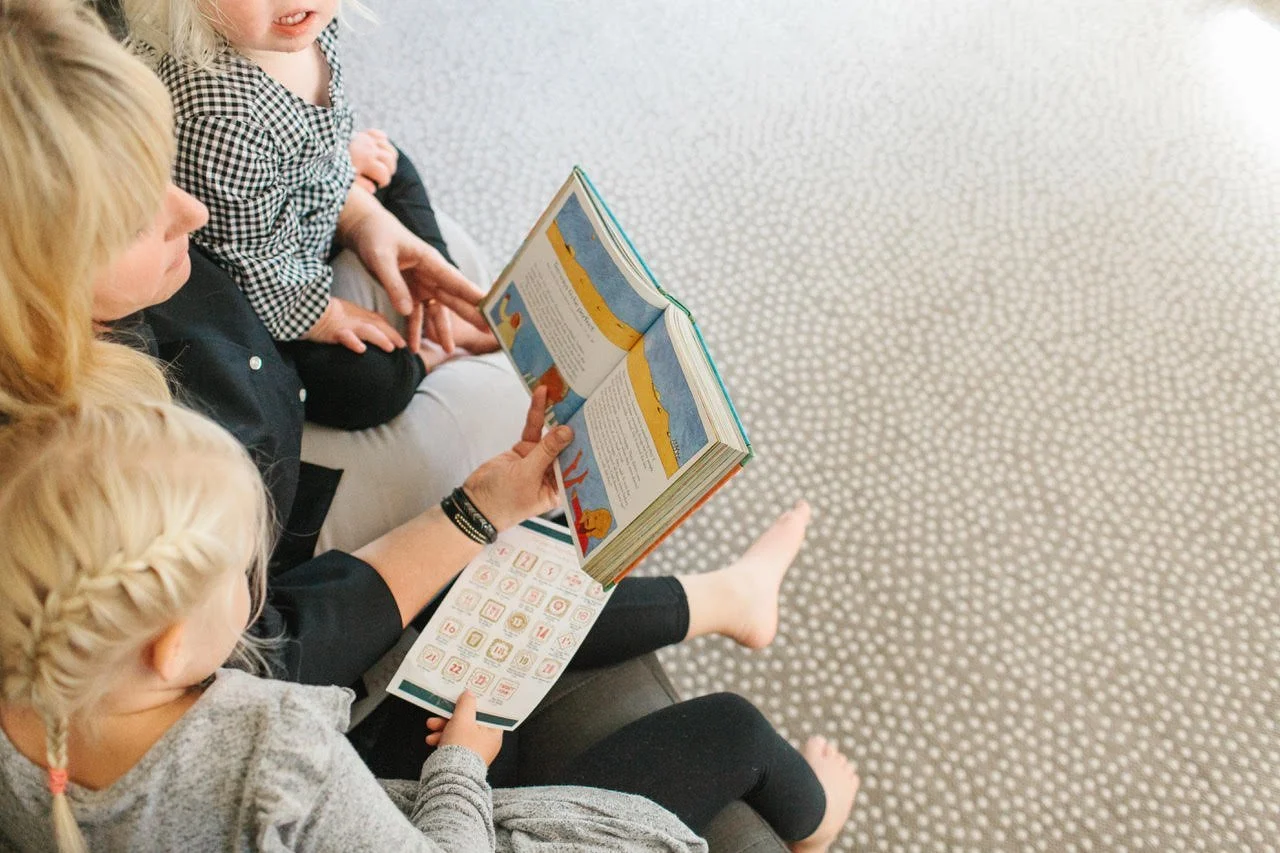How Do I Talk to My Kids About Jesus’ Death?
“Why does he have those boo-boos?” my three-year-old asked, pointing to Jesus’ nail-pierced hands in the picture book. I looked into her clear blue eyes and explained that the soldiers hammered nails into Jesus’ hands to keep him on the cross.
Her eyes clouded. “Ouch,” she said.
Yes, indeed. Ouch.
Talking about Jesus’ suffering and death can be intimidating, especially when trying to explain the significance of what happened on the cross to a preschooler. We’re afraid of saying the wrong thing or causing nightmares for our littles. But Jesus’ death is a critical part of the gospel, and we can learn how to talk about it in a way that draws our children into a deeper love for him.
The Bible explains that in the beginning, God created the world to flourish with life and beauty, but death entered as part of the curse of sin when Adam and Eve ate the forbidden fruit.[1] Yet God, in his compassion, promised a rescuer who would lift this curse by entering into it—suffering for our sins and taking the punishment upon himself, so that we may be forgiven.[2]
But Jesus didn’t stay dead! On the third day he rose to victorious life, and God highly exalted him as Lord of the universe.[3] Because of Jesus’ death and resurrection, God offers us forgiveness, reconciliation, and joyful life with him forever.[4]
This is the gospel—the good news—that makes our hearts beat faster in worshipful praise to our Savior. But to be honest, sometimes we struggle to grasp these wonderful theological truths. How do we even begin to approach the topic of Jesus’ death with our children?
I’m no expert, but I grew up with parents who taught me gospel truths from a young age, and I’m now teaching these truths to my three children ages 6 and under. Here’s what’s helping us:
1. Teach Old Testament Symbolism
Children understand physical object lessons easier than abstract ideas, so we can use stories they’re familiar with to help them understand Jesus’ death. For example, when we read the story of the ten plagues in Egypt, we can talk about how the angel of death would “pass over” the families whose doorposts were covered in the blood of the lamb.[5]
Many children learn by doing, so in this case we could print a picture of a lamb, and then have our kids trace it on cardboard, cut out the shapes, and wrap white yarn around their cardboard lamb. While their hands are busy, explain that Jesus is the Passover Lamb of God, and because of His blood, death has passed over those who belong to him.[6]
While some moms may use terms like transubstantiation or atonement, others may simply explain that Jesus took our punishment and made us right with God.
2. Allow Curiosity to Lead Conversations
We don’t need theology degrees to teach our children what Jesus accomplished on the cross. But we do need to foster environments where these conversations can unfold, and allow our children to ask questions. This might mean reading the Gospels together over breakfast, or following a family devotional during seasons like Lent that focuses on Jesus’ sacrifice on the cross.
However we start the conversation, let’s keep our plan simple and be patient, allowing for interruptions and questions, even those that may seem off-topic at first. Children tend to approach the Bible with minds wide open, and it’s a beautiful thing to see them make their own connections.
Also, it’s okay to admit that we’re still trying to understand things ourselves, while also holding to the authority and truthfulness of scripture. My six-year-old has started saying, “This doesn’t make sense! Why would Jesus choose Judas even though he knew he would betray him? Why would the temple leaders want to crucify Jesus when they were supposed to be listening to God? Why…? Why…? Why…?” Sometimes I just sit with her in the tension, and reply, “That’s a good question. I don’t know.”
3. Leave Your Children with Hope
As women of the word, let’s remain committed to portraying the tragedy of Jesus’ death without being graphic or sensational. Try reading the crucifixion account in John 19, and then lead your children to reflect on the great love of Jesus rather than the gruesome details. You might use questions like, “How do you think he felt when this happened?” and “What would keep him on the cross when he had the power to make it all stop?”
Sadly, in today’s world, our children are exposed to scary and sad subjects at an early age. You know your children best, so ask the Holy Spirit to give you wisdom as you discuss Jesus’ crucifixion with them. Even young children can find comfort in the fact that Jesus was a “man of sorrows,” and it’s okay for them to respond to Jesus’ death with sadness and grief.[7] But we want to gently lead them to the good news that Jesus is alive, and because of his resurrection, we live with hope that all things will be made right again.[8]
As I looked at my preschooler that morning, I invited her to join me in a simple prayer: “Jesus, thank you for staying on the cross even though it hurt you so much. Because of your boo-boos, we are healed.[9] I love you. Amen.”
We won’t always handle these conversations well, but we can trust that God will use our humble offerings to guide our children into a deeper love for Jesus.
[1] Genesis 1:28–30; 2:15–16; Romans 5:12
[2] Genesis 3:15; Isaiah 53:4–9; Romans 6:23; 1 Peter 3:18
[3] Philippians 2:5–11
[4] Galatians 2:19–20; Colossians 3:3–4
[5] Exodus 12:3–13; Isaiah 53:7
[6] John 1:29; 1 Corinthians 5:7; 1 Peter 1:19
[7] Isaiah 53:3
[8] 1 Peter 1:3–6
[9] Isaiah 53:5










